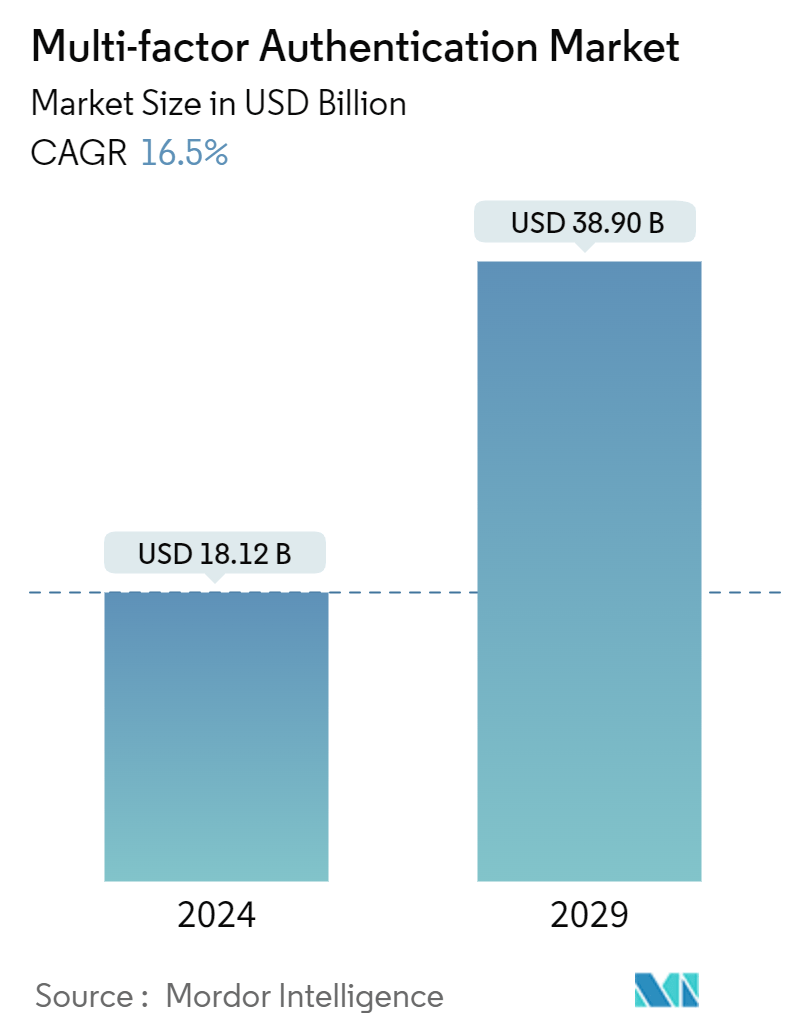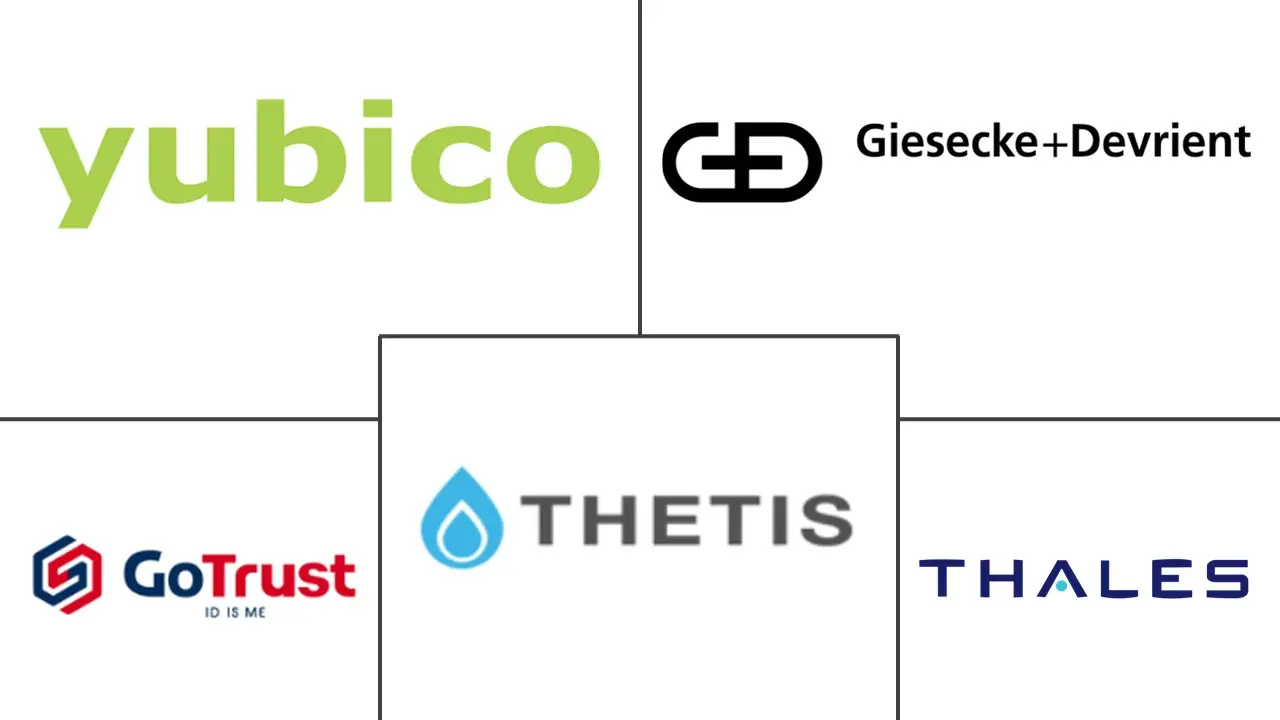Market Size of Multi-factor Authentication Industry

| Study Period | 2019 - 2029 |
| Market Size (2024) | USD 18.12 Billion |
| Market Size (2029) | USD 38.90 Billion |
| CAGR (2024 - 2029) | 16.50 % |
| Fastest Growing Market | Asia Pacific |
| Largest Market | North America |
Major Players
*Disclaimer: Major Players sorted in no particular order |
Need a report that reflects how COVID-19 has impacted this market and its growth?
Multi-factor Authentication Market Analysis
The Multi-factor Authentication Market size is estimated at USD 18.12 billion in 2024, and is expected to reach USD 38.90 billion by 2029, growing at a CAGR of 16.5% during the forecast period (2024-2029).
With the increasing frequency and sophistication of cyber threats, including phishing attacks and data breaches, organizations are pressured to implement strong security measures such as multi-factor authentication to protect confidential information and prevent unauthorized access. Strict data protection legislation and compliance standards, including the General Data Protection Regulation, Health Insurance Portability and Accountability Act, and PCI Security Standards, drive MFA adoption.
•To drive demand for multi-factor authentication solutions, regulatory compliance is crucial. Governments and industry regulators worldwide, such as the General Data Protection Regulation, HIPAA, or PCI DSS, have set strict security standards to protect sensitive data. Organizations increasingly rely on MFA as a reliable means of enhancing authentication security to comply with these requirements. The failure to comply with these regulations may lead to significant sanctions and possible judicial consequences, making the implementation of MFA a key element in risk mitigation for companies.
•The rising instances of cyber-attacks in various end-user industries, including BFSI, Healthcare, and IT & Telecom, supported by their increasing usage of the internet to have digitalized operational processes, are fueling the demand for multi-factor authentications (MFA) solutions in the market due to their application in adding a layer of protection to the users’ access control, endpoint systems or company’s data, which effectively helps prevent stolen passwords, malware, phishing, and ransomware attacks, driving the growth of the market.
•The emergence of industrial automation and the usage of cloud-based software for automating business functionalities in enterprises are raising the number of IIoTs and the usage of computers in any business environment. This can raise the risk of cyber-attacks and unethical access to the company’s business operations and data, fueling the demand for MFA solutions due to their application in providing secure access and authentications before using the devices of the enterprises, which is expected to drive the market’s growth during the forecast period.
•One of the biggest challenges for MFA is the increase in management complexity for administrators and end users. In most cases, MFA is complex and not user-friendly as it requires additional steps for end users. As organizations undergo digital transformation, there are challenges associated with complexities in implementing and using multi-factor authentication. Legacy infrastructure, characterized by outdated hardware, software, and protocols, poses limitations to implementing modern cybersecurity measures. Combining these outdated systems with modern technology frequently results in an environment that makes it more challenging to implement and maintain strong cybersecurity frameworks.
•Defense spending in many countries worldwide is increasing due to the strategies to strengthen their geopolitical positions at a global scale, which is driving the demand for cybersecurity solutions as, in the trend of digitalization, cyber wars are becoming more prevalent. Furthermore, the number of cyber-attacks has increased to weaken national security, which shows the importance of adopting cybersecurity solutions in private and government organizations, which could accelerate the demand for MFA in the future.

